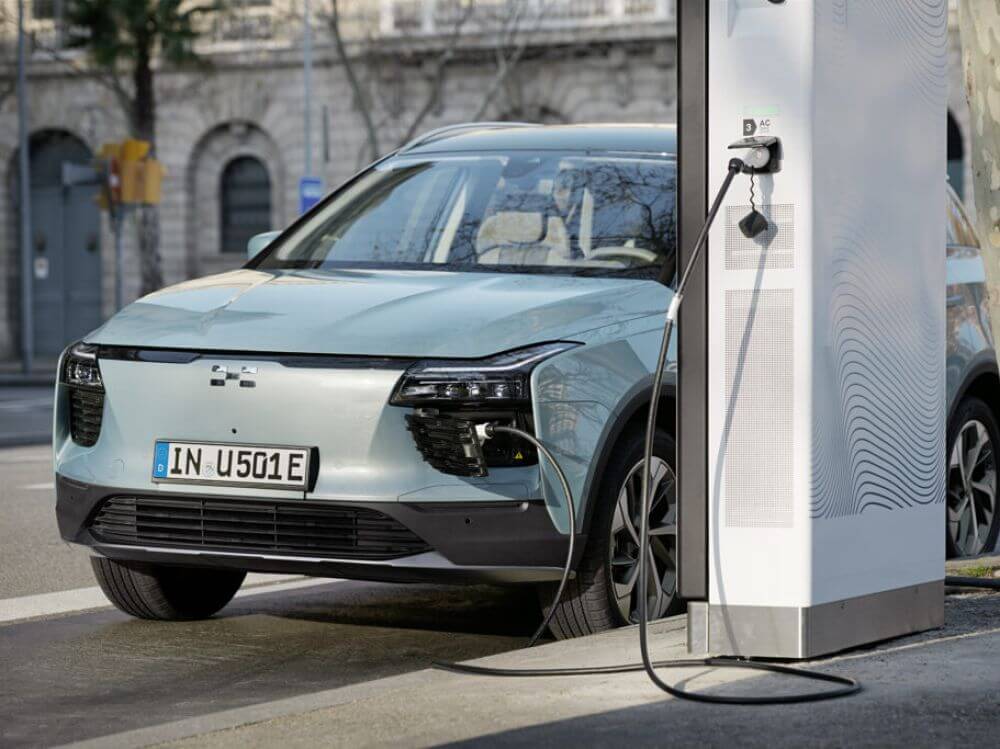China's electric cars: a new assault on the European market?
It's no longer a secret, that sales of electric cars are beginning significant, with 5 million electric vehicles sold by 2022 and an estimated 15 million by 2030.. Chinese automakers are gradually gaining a foothold in the all-electric market in Europe.. MG and other dealers in the same country have understood this very well and and have found a great opportunity to establish themselves in Europe on a long-term basis.
We can also see that it's not just the big incumbent manufacturers who want to gain market share in this area. More and more small new start-ups (such as FiskerXpeng and Sonos) are taking the plunge and embarking on this adventure.. Partnerships between Chinese and Western manufacturers are also becoming commonplace. China is deploying a real action plan to attract future electric car drivers and find its place in the European market.
The Covid-19, an unfortunate event, caused car sales plummet during the health restrictions, to 63 million vehicles in 2020 compared with 75 million in 2019. Consumers delayed their purchasing decisions during the pandemic, and now want to towards cleaner, nature-friendly electric vehicles. electric vehicles. A trend that proves the rise of a strong ecological conscience. For good reason, 63% of French people believe that climate change is caused by global warming. Their choice is propelled by the decision to ban the sale of combustion-powered cars from 2035also motivated by state subsidies such as the conversion premium and the environmental bonus.
Visit cost of fuel was also an argument that prompted many drivers to make the ecological transition. ecological transition. As a reminder, the price of a full charge at a charging station charging station for an charging station is much cheaper than a full tank of diesel or petrol. Consumption varies from model to model, it is generally 15 kWh/100 km. For the most energy-hungry models, consumption can be as high as up to 20 kWh/100 km. The cost of a full recharge for an electric car is around 2 euros for a 100 km recharge compared with €10 of fuel per 100 km for a combustion-powered model.
More ⇒ The cost of recharging an electric car
Chinese brands therefore have a long way to go to conquer the European market. Chinese manufacturers need to adopt a solid brand image, and adapt to the European market, which does not have the same consumer and purchasing habits, nor the same culture. However, a number of several Chinese brands have already begun to establish themselves and sell well on the Old Continent.
Discover the electric cars available from Beev
Xpeng G9 vs BMW iX
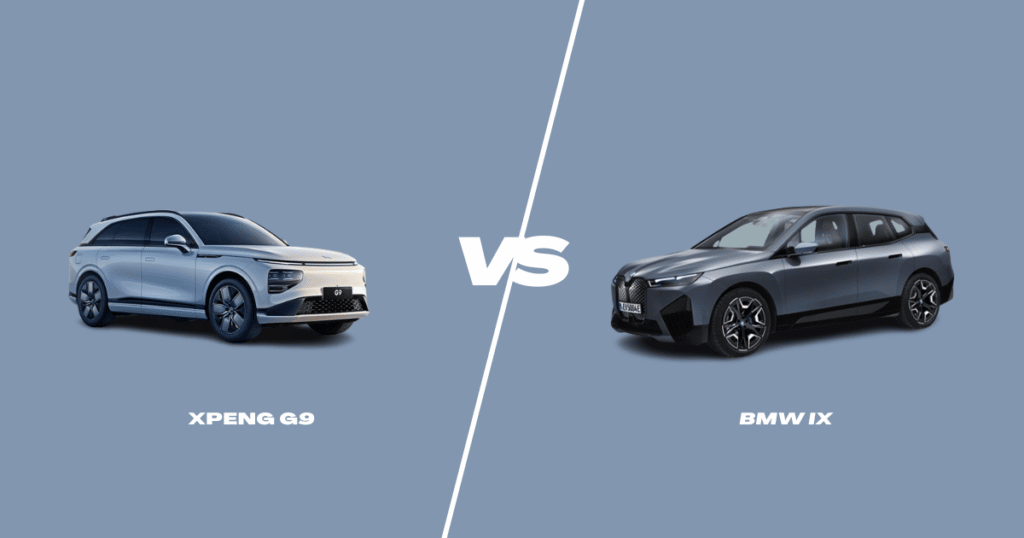
Xiaopeng, better known as XPeng Motors, is one of China's leading Chinese automakers recently entered the electric vehicle market. electric vehicles market with its G3 electric SUV. Since then, the company has expanded internationally, offering offers two electric vehicles in Europestarting with the Xpeng G9. This model, presented in September 2022, has been the talk of the town, not least for its impressive recharging speed from 10% to 80%, equivalent to 200 km in in just 15 minutes!
Its long range (from 650 to 700 km) remains one of its major advantages over its German competitor, the BMW iX. The XPeng G9 is a fast, quiet and comfortable electric vehicle. It also offers high-end interior with a touch screen on the left and a on the left and a second one on the right, a trend that is becoming increasingly popular.
In terms of practicality, it has nothing to envy other luxury models in the same range, with a generous trunk capacity of 661 L compared with 500 L for the German model, making it a perfect electric SUV for families. For its part, BMW is one of the world's leading brands of electric vehicles and cars. It offers some of the highest-quality models in the world, but at fairly high purchase prices.
The closest competitor to the XPeng G9 is the BMW iX. BMW has been for more than 100 years luxury cars that approach perfection in every respect. Targeting above all a high-end clientele. The company also markets models in all ranges, from the small city car to the electric sedan in the €100,000 range.
Price | Raw battery | Autonomy | |
XPeng G9 | 45 000 € | 78 kWh | 650 km |
BMW iX Drive 40 | 86 450 € | 76 kWh | 435 km |
The BMW iX is aimed at a public keen on electric electric SUV electric SUV with impressive performance and the latest technologies on the market. All this without neglecting comfort and space.
MG ZS vs Citroën ë-C4
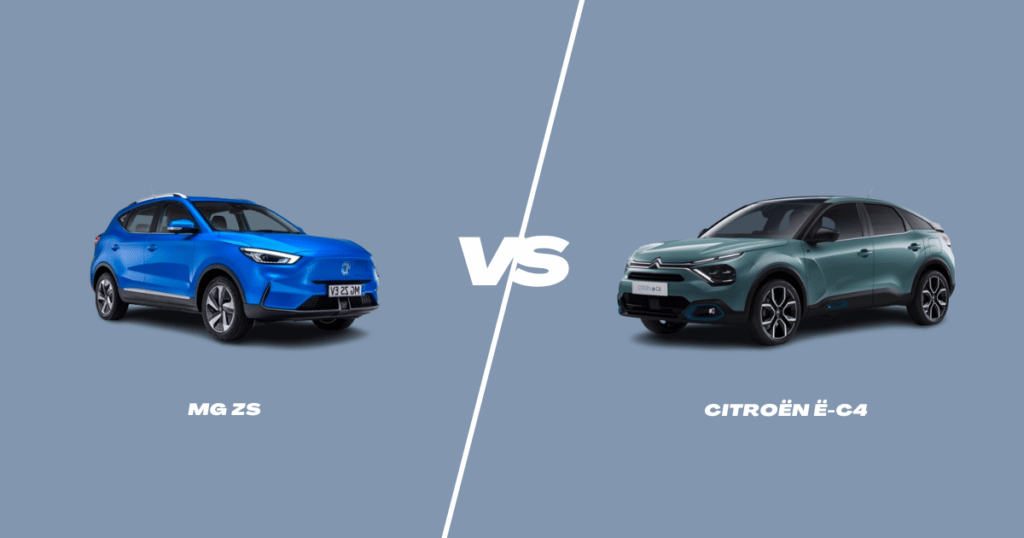
The MG ZS will undoubtedly remind you of the brand MG originally a British brand belonging to the MG-Rover group was acquired by the Chinese SAIC group in 2007.. The Chinese brand has therefore been firmly established on the European market for many years. This is one of the reasons why we can find various electric cars of the brand can be found in dealerships in France, and particularly on Beev (MG Marvel R, MG 5 and the MG 4).
Citroën unveiled its all-new electric SUV, the Citroën ë-C4 Shine Edition. This model competing directly with the MG ZS EV in the market for the best, most affordable electric vehicles. All Citroën ë-C4 models come with a single electric configuration, a 100 kW motor and a 50 kWh battery.
The MG ZS Comfort features a 130 kW engine and a 51.1 kWh battery offering a capacity of 49 kWh. It could be more powerful and capable of reaching distances over which the Citroën ë-C4 would struggle to cover on a single charge.. A negative point for the French brand's model, but that doesn't mean it has said its last word. That's right, its 50 kWh battery battery is perfectly suited to everyday use, Its capacity even exceeds that of the Mazda MX-30. It's in terms of comfort and ride quality that the Citroën ë-C4 comes out on top. Where the MG ZS flinches and offers a rather firm ride quality, the French electric vehicleoffers the driver a smooth ride, thanks in particular to its hydraulic suspension system.
It's not about technical performance of the two electric cars.. They both offer virtually identical 0 to 100 kph times, and similar usable capacities (44.5 kWh for the MG ZS and 46 kWh for the Citroën ë-C4).The same applies to equipment. The same applies to on-board technology and safety systems. The Citroën ë-C4 includes the Safety Pack Plus with the Shine edition, which is equivalent to the MG Pilot Advanced Driver Assistance System on the MG ZS EV.
The design seems to be one of the weak points of the Chinese brand's model.. Whereas the Citroën ë-C4 combines the elegance of a compact sedan with that of an electric SUV, the MG ZS EV looks a little dull and uninteresting. Unlike the French electric car, it offers very few free graphics options for customizing certain body elements. the French electric car.
Price | Raw battery | Autonomy | |
Citroën ë-C4 | 37 750 € | 50 kWh | 350 km |
MG ZS EV | 27 990 € | 51 kWh | 320 km |
The MG ZS EV is therefore the best choice in terms of range and value for money when you look beyond comfort and design. On this point, the Citroën ë-C4 wins hands down with its superior design and better suspension.. The Citroën ë-C4 therefore seems ideal for a public looking for their very first electric vehicle. The MG ZS EV, on the other hand, is more suited to a customer base of elooking for a more solid model at an excellent excellent value for money.
LeapMotor 03 vs Fiat 500e
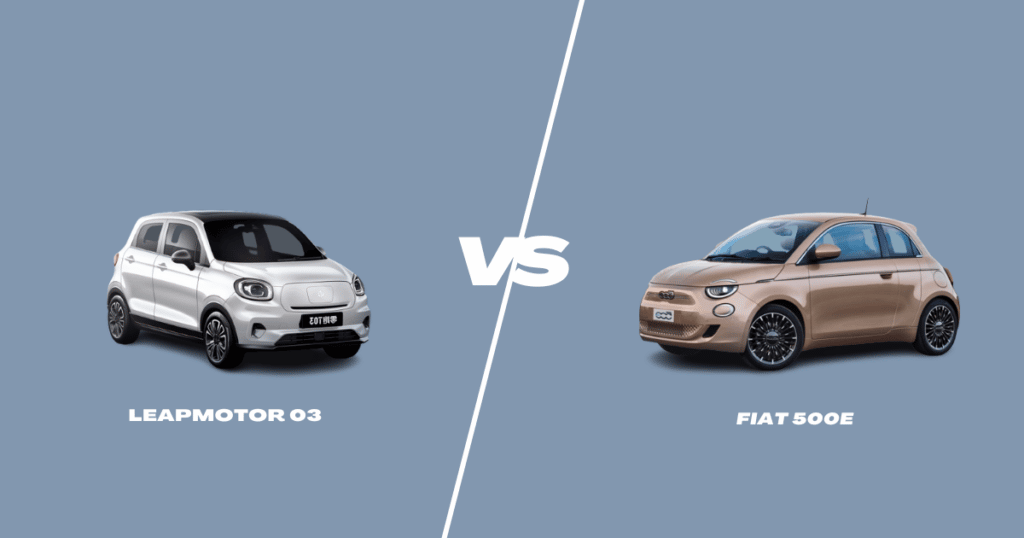
Leapmotor is undoubtedly a brand you're not familiar with, but that could soon be history. Its catalog includes electric vehicles with an excellent price/performance ratio. Notably the LeapMotor 03the model we'll be talking about in greater detail in the following lines. It is the main competitor to the Fiat 500e sharing similar small dimensions (3.62 m long, 1.65 m wide and 1.58 m high) compared with 3.63 m, 1.9 m and 1.53 m for the little Italian. Its lines and design are very reminiscent of the Fiat 500e even if they are a little less refined.
Straight from China, the Leapmotor T03 is a small electric city car five-door electric city car. Under the hood of this compact car is a 109 hp motor powered by a battery with a total capacity of 41.3 kWh, or around 38 kWh net.
In terms of equipment, it has nothing to envy from its Italian Italian brand. Everything has been updated, including identical full LED headlamps, 15-inch alloy wheels slightly smaller than those on the Fiat 500e, a panoramic roof and no fewer than 11 proximity sensors, all as standard!
When it comes to practicality, the T03 is generous with a large glovebox and ample storage space. An advantage for the Chinese model, especially as it boasts a load volume of 210 liters, a little better than the Fiat, which offers 185 liters. Passengers also benefit from incredible knee room for such a small car, and a comfortable bench seat. However, we regret the absence of an armrest on the other side, which is indeed present on the Fiat. on the Fiat.. Up front, the upholstery is well-designed and welcoming, but you'll have to make do with fixed headrests and a passenger seat that can't be adjusted in height.
A big flaw for this electric vehicle which benefits the Fiat 500e with its heated, adjustable seat. The dashboard is relatively sober and of standard design, covered in the same hard material. It incorporates its own voice recognition and intelligent intelligent 3.0 connectivity for the fastest possible connection. Bluetooth connectivity (like Apple CarPlay and Android Auto on the latest models released at the end of the year) is also located on the 10.1-inch central screen, which is the same size as that of the Fiat 500e (10.25 inches). The Fiat 500e offers its customers :
- A system that automatically synchronizes traffic informationtraffic traffic densitytraffic weatherweather charging stations or even radars.
- Apple CarPlay andAndroid Auto to use your smartphone in complete safety.
- The full range of connected services for remote control your electric vehicle remotely.
- Once again, battery capacity is not the deciding factor between the two vehicles, which are more or less identical, even if theFiat 500e has a slightly higher capacity .
- However, it's on price that the little Chinese electric car stands out and becomes a real asset for potential buyers. It really comes into its own when you consider thatit comes in at €5,000 less than the Fiat 500e.
The Leapmotor T03 is therefore an excellent compromise for drivers looking for a very affordable model that easily fulfills the objectives of a small city car (commuting in urban areas) with a very interesting range. Unfortunately, you can't expect an ultra-comfortable ultra-comfortable model offering perfect ride quality. It's not for drivers specifically looking for these features, but for those looking for simplicity, sobriety and the essentials that an electric vehicle can and should offer. Nevertheless, it remains a quality model.
For the Fiat 500ethe price is still right for a Fiat. It targets customers who are already familiar with the brand, its know-how and the quality of their cars. Drivers are looking for comfort, driving quality and better performance, even if it means sacrificing range, which is less important. Even if the price is much higher.
Price | Raw battery | Autonomy | |
LeapMotor T03 | 20 000 € | 41 kWh | 280 km |
Fiat 500e | 25 400 € | 42 kWh | 320 km |
Aiways U5 vs Volkswagen ID.4
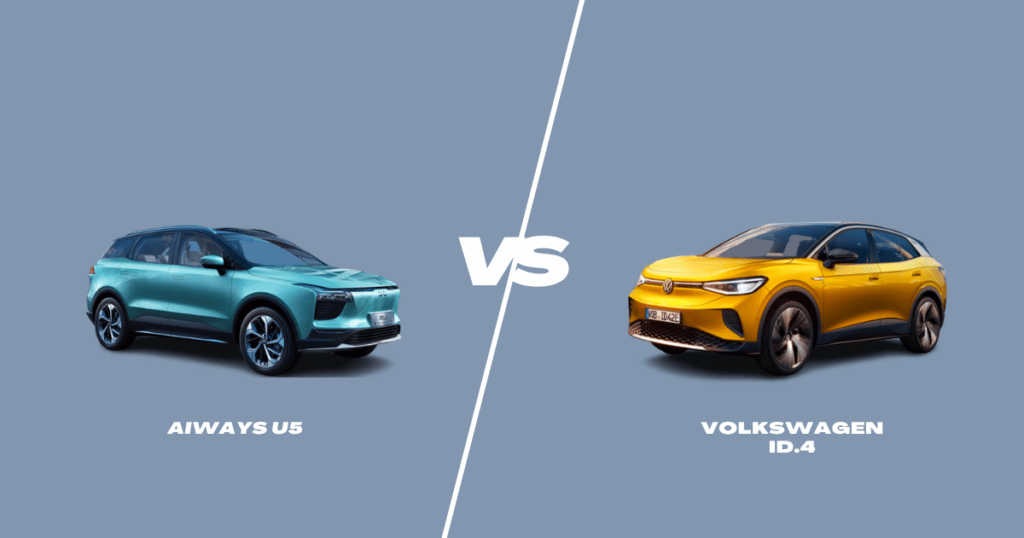
As seen above with the BMW iX, it's the turn of the Volkswagen ID.4 to take on the Chinese model. duel with the two German electric vehicles.. While the Volkswagen ID.4 seems comfortably installed as one of the top models in the electric SUVa newcomer from China is just around the corner. L'Aiways U5 is once again positioning itself as a serious competitor to the German model, in the same way as the BMW iX. An electric SUV which, despite its huge price difference, is European quality.
Indeed, there is a staggering difference of more than €10,000 between the Volkswagen ID.4 and theAiways U5. What explains this incredible difference? Is the Chinese model really a bargain?
Obviously, with a price differential as wide as that of the Volkswagen ID.4 and the Aiways U5it's only natural that the Volkswagen should perform better. While the German electric car has a gross battery capacity of 82 kWh batterybattery, the Chinese manufacturer's car features a 63 kWh.
In terms of size, however, theAiways U5 is taller and longer (4.68 m vs. 4.58 m and 1.87 vs. 1.85). It looks more like an 100% electric SUV than the Volkswagen ID.4 which, with its flowing lines, looks like a mix of van and electric SUV. van and electric SUV.
There's not much to complain about in terms of ergonomics for the two electric cars. The driver's seating position is very comfortable, and essential controls such as the steering wheel and pedals are ergonomically designed.
In addition, theAiways U5many rather lengthy steps are often required to use the touchscreen, which is often not as responsive as expected, representing a major hazard and distraction when driving. Incidentally, this shortcoming has earned the electric car a great deal of criticism. It's also worth noting that the air-conditioning controls do without physical buttons and are operated on an additional touchscreen, which also serves as a cover for the cell phone charging compartment, which isn't very practical.
For the Volkswagen ID.4it's not much better. It also completely dispenses with fixed buttons. As a result, it takes much longer to perform the same actions as usual on other Volkswagen models, for example. The touchscreen, which enables a large number of actions to be performed, still occasionally encounters bugs.
Manufacturers have focused their vehicles on comfort. But Volkswagen seems to exploit this potential much better. The ID.4 is equipped with shock absorbers that ensure a comfortable ride despite its large wheels, even at high speeds. L'Aiways U5on the other hand, is poorly tuned in this respect, which can be problematic and uncomfortable on winding roads, but the configuration suits the relaxed character of the electric SUV quite well.
Bad point forAiways U5. It doesn't reach the usual standard in this class of vehicle, and there are very few adjustment options. For their part, the ID.4 seats, on the other hand, offer good seating comfort even on long journeys. They offer adequate lateral support and lumbar support with a massage function. In terms of interior soundproofing, the Volkswagen ID.4 is also better suited to long journeys.
Price | Raw battery | Autonomy | |
Aiways U5 | 39 990 € | 63 kWh | 410 km |
Volkswagen ID.4 | 52 500 € | 82 kWh | 531 km |
L'Aiways U5 is not a bad electric vehicle for its price, but with its large battery and long range, it's positioned as a mid-range electric SUV. Admittedly, it doesn't offer the almost flawless features of the Volkswagen ID.4but it's also not aimed at the same target group. It's up to the driver to decide whether the extra €10,000 is justified, based on his or her expectations.
Conclusion
Despite the enthusiasm generated by the invasion of dealerships, it's still too early to judge whether the Chinese gamble will be won. The breakthrough of Chinese electric cars may remain limited for two reasons: strong European competition, but also the difficulties that persist in the use of electric cars in general.
Beev is working to simplify and support the transition to electric vehicles for as many people as possible, through a range of long-term rental as well as medium-term rental. Finally, to find out more, we invite you to discover our Top 9 Chinese electric cars.
